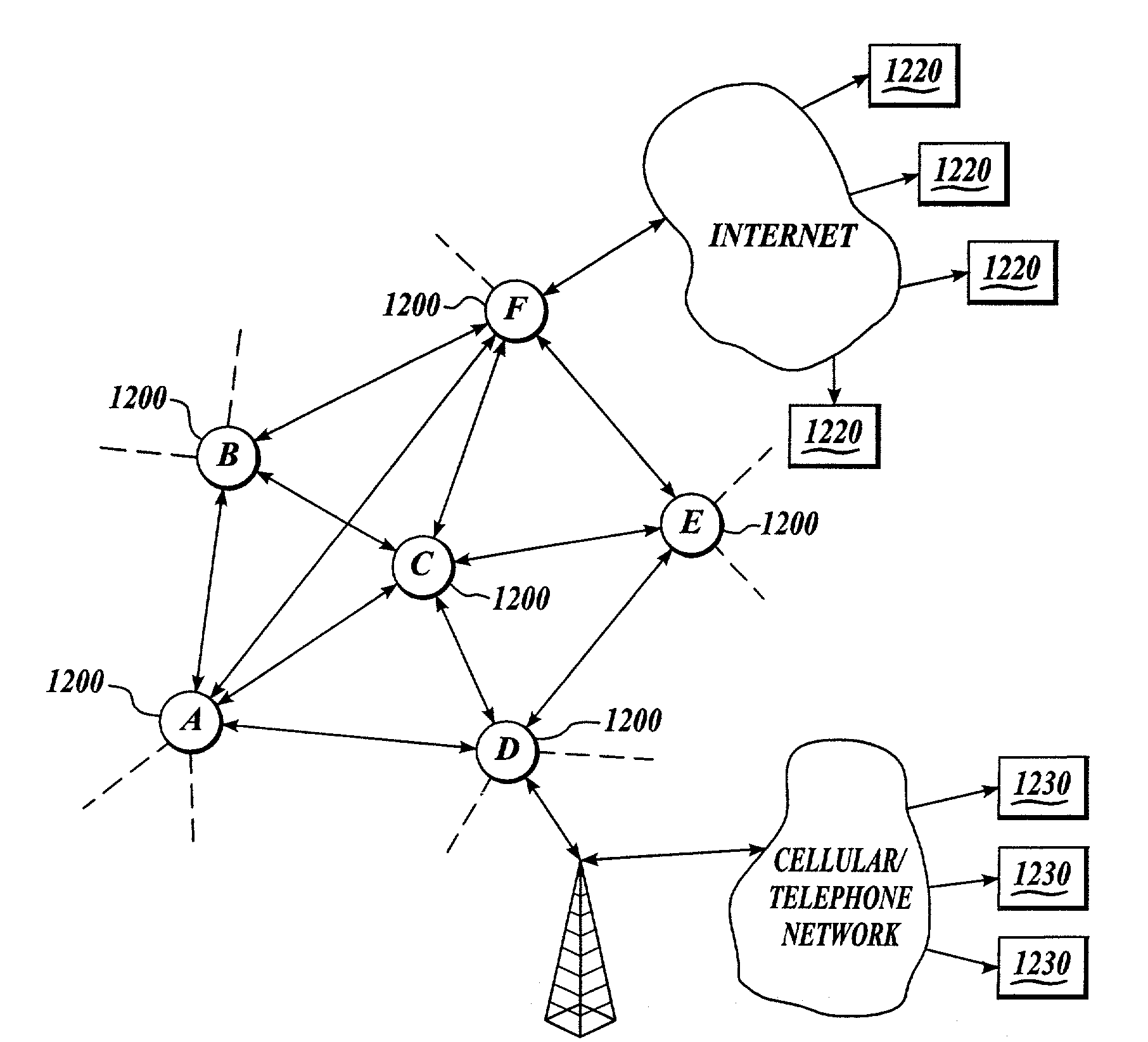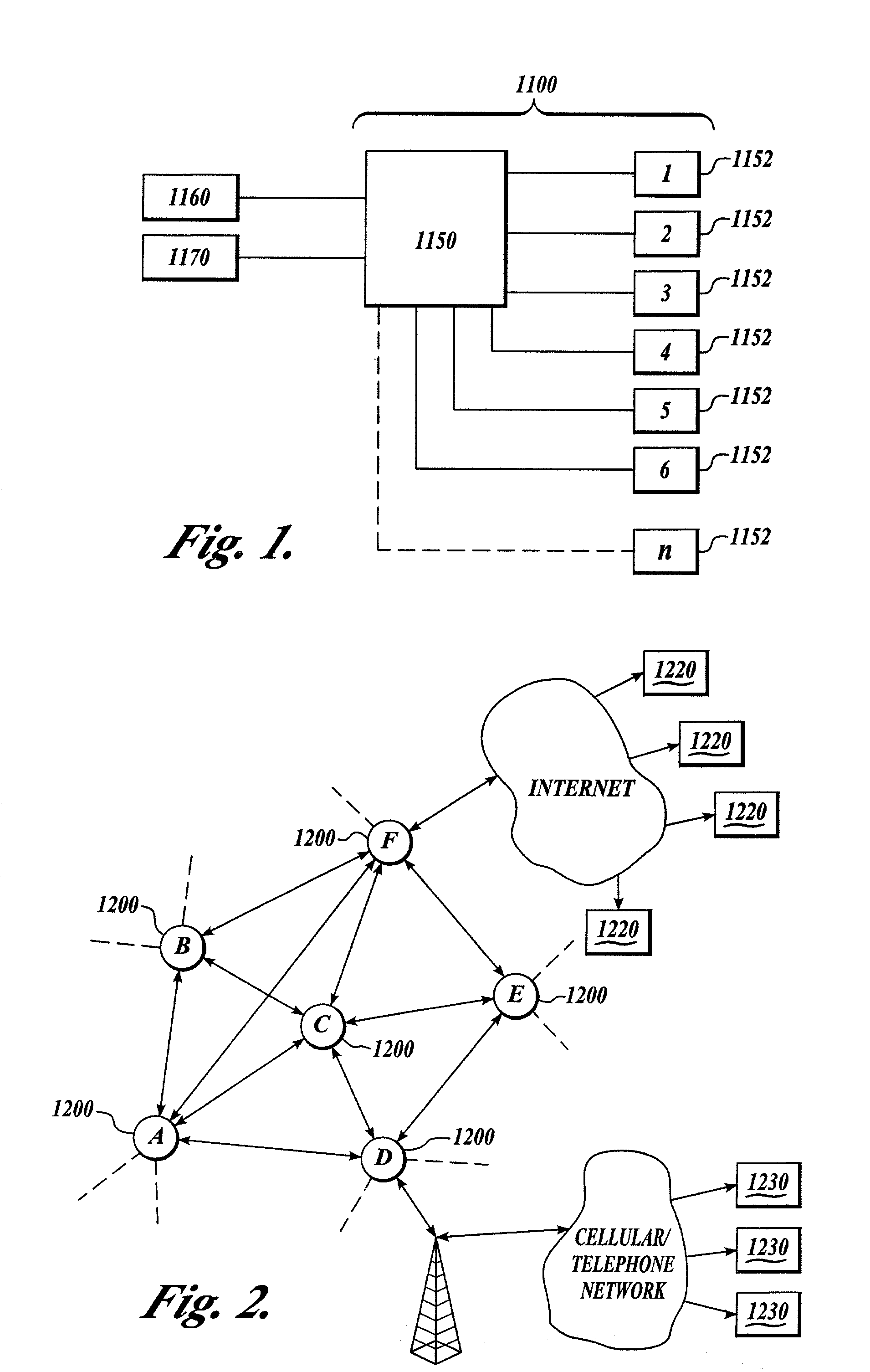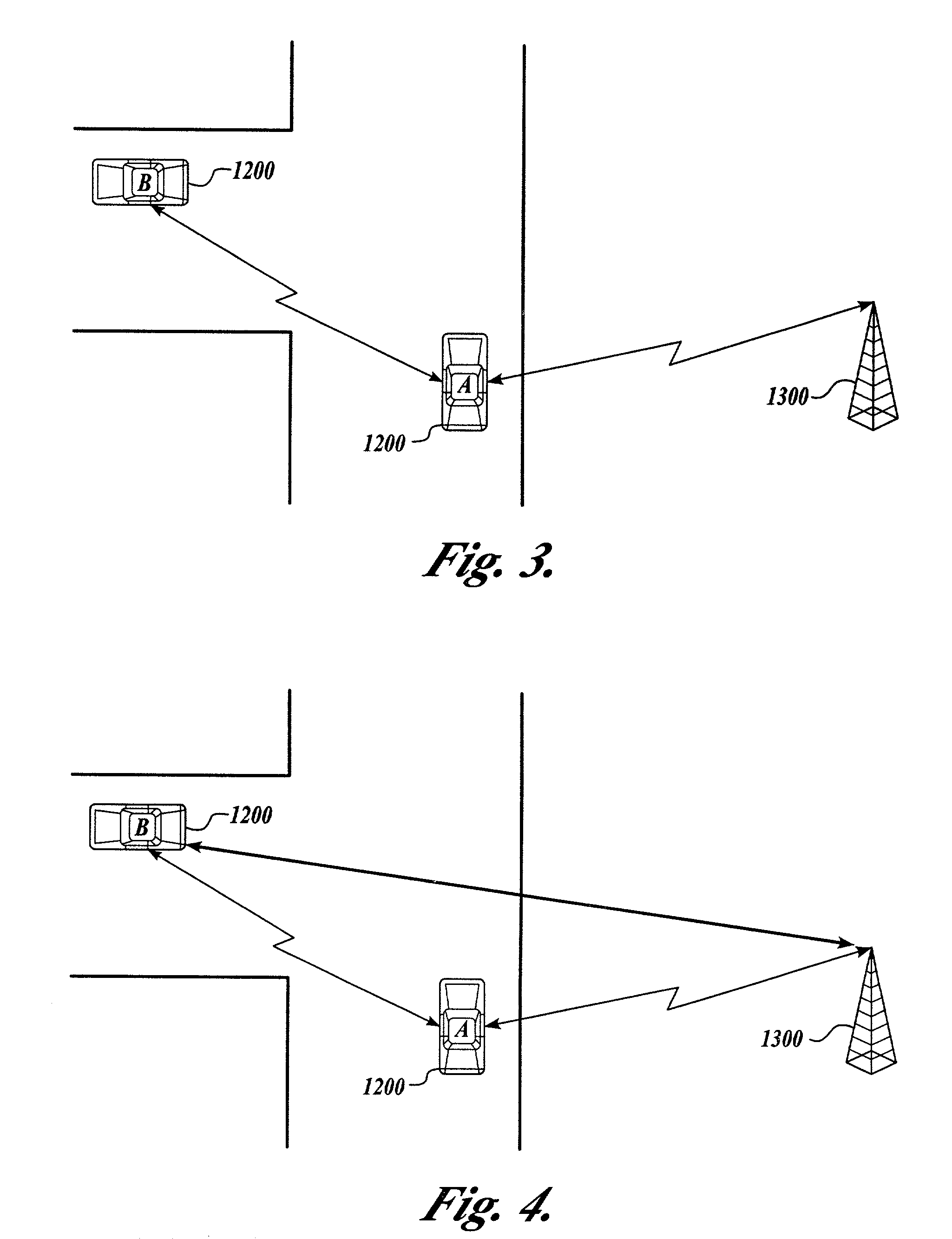Multi-sensor fusion
a multi-sensor and fusion technology, applied in the field of data communication, can solve the problems of data encryption, data and message sending, and the inability to ensure the message sender's identity, and achieve the effect of enhancing the difficulty
- Summary
- Abstract
- Description
- Claims
- Application Information
AI Technical Summary
Benefits of technology
Problems solved by technology
Method used
Image
Examples
Embodiment Construction
[0049]In the specification and claims, the term “multi-sensor fusion” means the determination of the best value of a variable through the mathematical analysis of input data from two or more sensors measuring data relating to the variable; and also means the comparing and correlating of data from a multiplicity of sensors to obtain more complete information. For example, in order to determine a distance between two vehicles, each vehicle may be equipped with a variety of sensors, for example, radar, infrared, and other sensors for monitoring a distance between the vehicles. Depending upon environmental and other conditions, distance readings from these sensors may not be completely identical, and data fusion technology is used to compare, correlate and analyze the inputs from each of the different types of sensors to determine the best value of the distance between the vehicles. In general, the use of multi-sensor (data) fusion results in a better prediction (i.e., higher probabilit...
PUM
 Login to View More
Login to View More Abstract
Description
Claims
Application Information
 Login to View More
Login to View More - R&D
- Intellectual Property
- Life Sciences
- Materials
- Tech Scout
- Unparalleled Data Quality
- Higher Quality Content
- 60% Fewer Hallucinations
Browse by: Latest US Patents, China's latest patents, Technical Efficacy Thesaurus, Application Domain, Technology Topic, Popular Technical Reports.
© 2025 PatSnap. All rights reserved.Legal|Privacy policy|Modern Slavery Act Transparency Statement|Sitemap|About US| Contact US: help@patsnap.com



